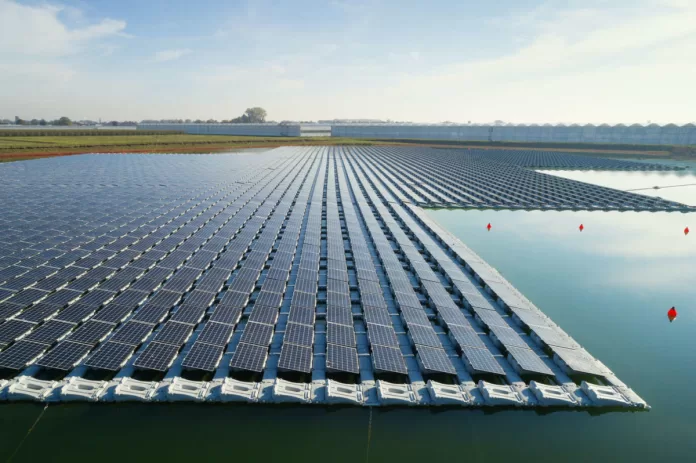Researchers from China, Thailand, Sweden, and the United States used a PV system performance model from Sandia National Laboratories to figure out the potential for floating solar (FPV) generation around the world, with specific results for the 20 countries with the most potential.
The study only looks at reservoirs that are bigger than 0.01 km2 and cover at least 30% of their area, but not more than 30 km2. The researchers used Global Reservoir and Dam (GRanD), the Georeferenced Global Dam and Reservoir (GeoDAR), and OpenStreetMap to find the right reservoirs (OSM). There are 114,555 reservoirs in the world that meet the criteria. Together, they cover an area of 554,111 km2. Out of those, 2,561 reservoirs already have the infrastructure in place to turn water into electricity and connect to the grid.
“Unlike previous studies, which used empirical formulas to estimate the FPV electricity generation potential, we use a technically rigorous PV system performance (PV LIB, Sandia National Laboratories) that takes into account climate conditions and the specifications of the particular PV and inverter used,” the scientists said.
The solar panel is a VBHN235SA06B made by Panasonic. It has a power output of 235 W and an efficiency of 18.6%. The inverter for 240 V is also made by a Japanese company. The team used data from the Synoptic 1 degree (SYN1deg) and ECMWF Reanalysis version 5 – Land (ERA5-Land) databases about the sun’s radiation, the temperature, and the speed of the wind from 2001 to 2020.
The results showed that FPVs built on global reservoirs could make an average of 9,434 TWh of electricity per year, with a standard deviation of 29 TWh. Covering 30% of reservoirs with floating solar panels could also cut water loss by 106 km3 per year. If the coverage of the reservoir area went down to 20% or 10%, the annual FPV production would be 7,113 TWh or 4,356 TWh, depending on which number was used.
“Globally, parts of the United States, eastern Brazil, Portugal, Spain, northern South Africa, Zimbabwe, India, and eastern China tend to have the most potential,” the scientists said.
The results also show that 40 countries have more FPV potential than their current annual electricity demand. For example, Brazil’s huge electricity demand of 538 TWh per year can be met by its 865 TWh per year of FPV potential. According to the study, Zimbabwe, Laos, Ethiopia, Cameroon, Myanmar, and Sudan have a lot more FPV electricity potential than they need right now.
Here are the results for the top 20 countries in terms of their potential for floating solar power:
1 911 TWh per year in the U.S.
1,107 TWh per year in China
865 TWh per year in Brazi
766 TWh per year in India
506 TWh per year in Canada
236 TWh per year in Russia
228 TWh per year in Mexico
210 TWh per year in Australia
171 TWh per year for Turkey
144 TWh per year in South Africa
134 TWh per year in Thailand
132 TWh per year in Spain
117 TWh per year in Argentina
108 TWh per year in Vietnam
93 TWh per year for Nigeria
85 TWh per year in Iran
84 TWh per year in Zimbabwe
80 TWh per year In Sirlanka
80 TWh per year in Sweden
80 TWh per year in Venezuela
Scientists said, “Resolving long-standing problems with policy, planning, financing, regulations, tech support, construction, and upkeep will be needed to reach this vision.”





